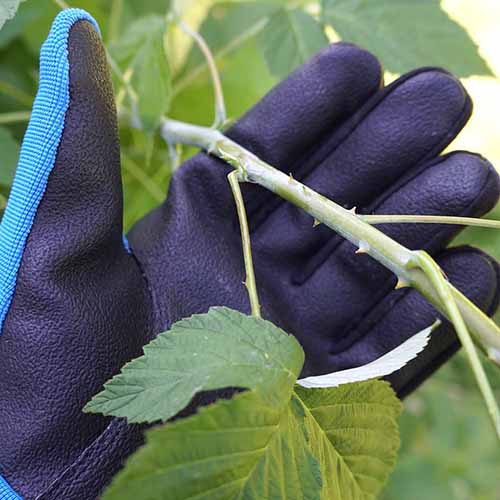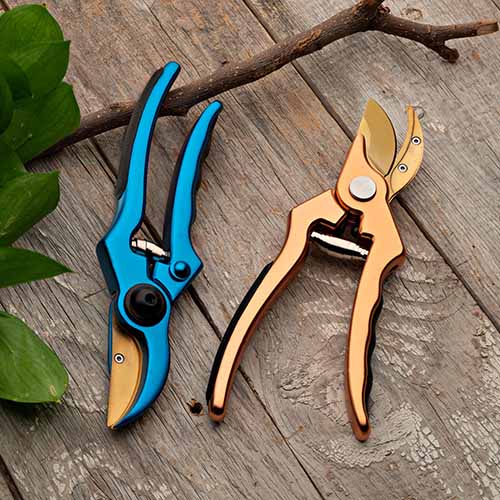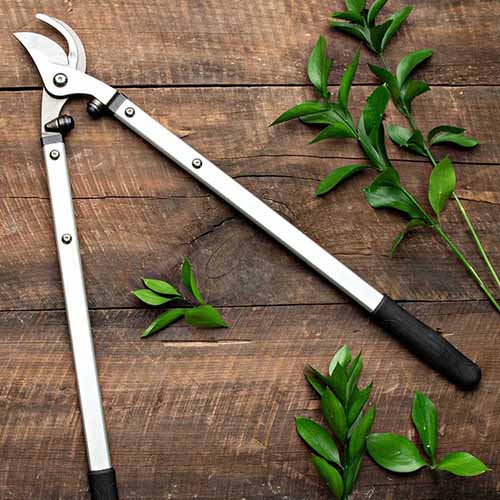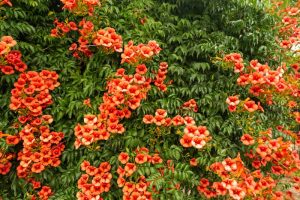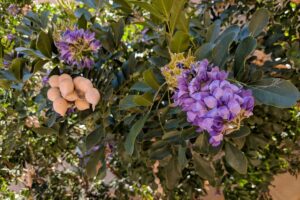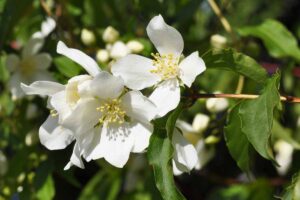As heavenly bamboo shrubs and my middle school yearbook photos can attest, there’s a fine line between an organic, natural look… and just being a mess.
A well-pruned Nandina domestica manages to rock the “au naturel” aesthetic without looking artificially manicured. But the hairstyle in my junior high headshots? Definitely on the wrong side of “windblown.”
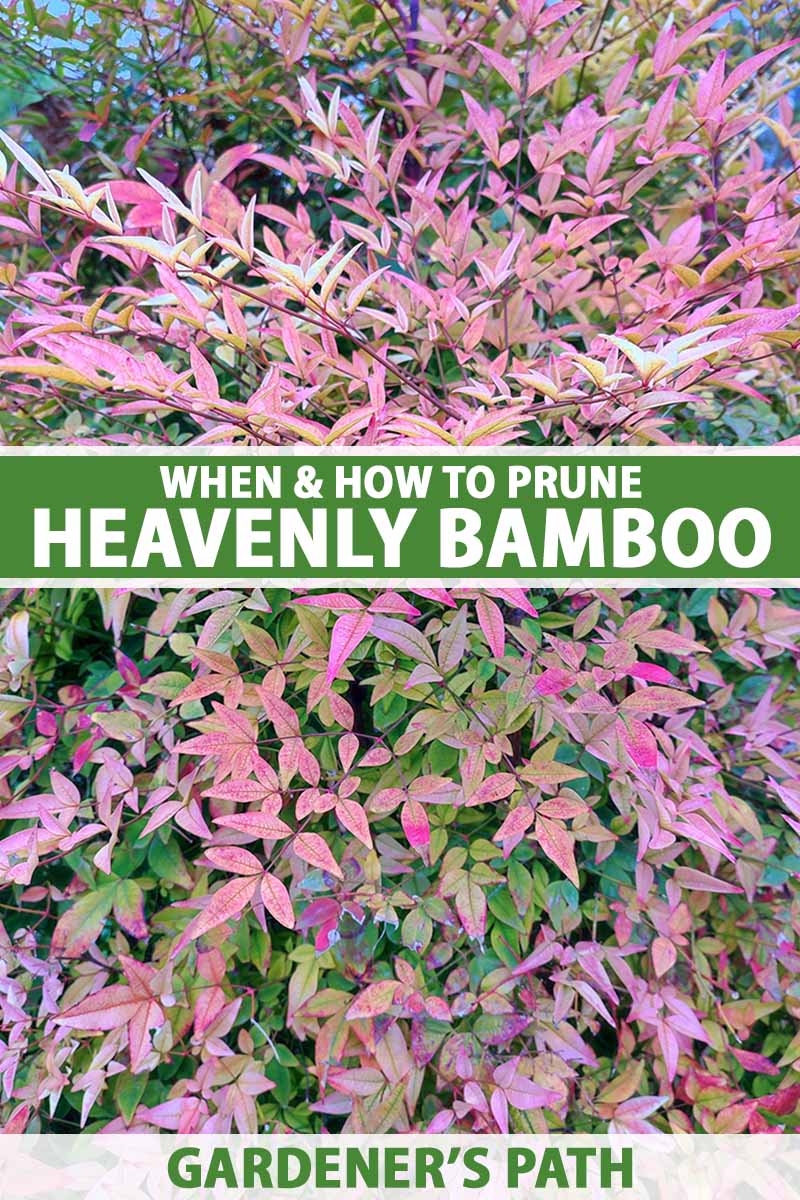
We link to vendors to help you find relevant products. If you buy from one of our links, we may earn a commission.
I can’t go back in time and tell my secondary school self to get a haircut – he wouldn’t listen to me anyway. But I can tell you how to prune heavenly bamboo the right way.
A long segue, I’ll admit, but I brought it back around.
You can learn more about growing heavenly bamboo in our guide.
In this primer, you’ll receive the lowdown on all things heavenly bamboo pruning: the why, what, when, and how. And the who? Well, by the end of the guide, that’ll be you!
Here’s what we’ve got up ahead:
What You’ll Learn
A brief note on invasiveness, before we get started:
A shrub native to Japan and China, heavenly bamboo grows very aggressively, and naturalizes in new environments quite easily.
It’s considered especially invasive in the southeastern United States, with N. domestica appearing on many invasive species lists in states throughout the region.
If your area has a “no heavenly bamboo” rule, then by all means skip this guide and get to work on removing any existing specimens from your landscape.
But if you live in a place where cultivating N. domestica is permitted – and not environmentally irresponsible – then have at this here know-how!
Why Prune These Shrubs?
In the gardening game – where your to-do list is never-ending – I’ve found that knowing the “why” really helps to suppress the “why bother?”
Aesthetics
It goes without saying that a plant with dead, damaged, or diseased branches will look way better once that’s all removed.

Even if all the branches are healthy and vibrant, they may leave the plant with a less-than-desirable form overall.
By removing structures that don’t add to the intended shape, you’ll be left with the exact appearance that you want.
And in the case of heavenly bamboo, it definitely looks better once it’s trimmed up a bit.
It may not need the laser-precise, geometrically-shaping cuts that a world-class boxwood hedge requires, but you can’t let N. domestica grow without occasional interference. Not if you expect it to look its best, anyway.
Health
This kinda goes hand and hand with aesthetics, since a healthy plant tends to look better than a sickly one. Even beyond its appearance, pruning heavenly bamboo properly will definitely improve the plant’s health.
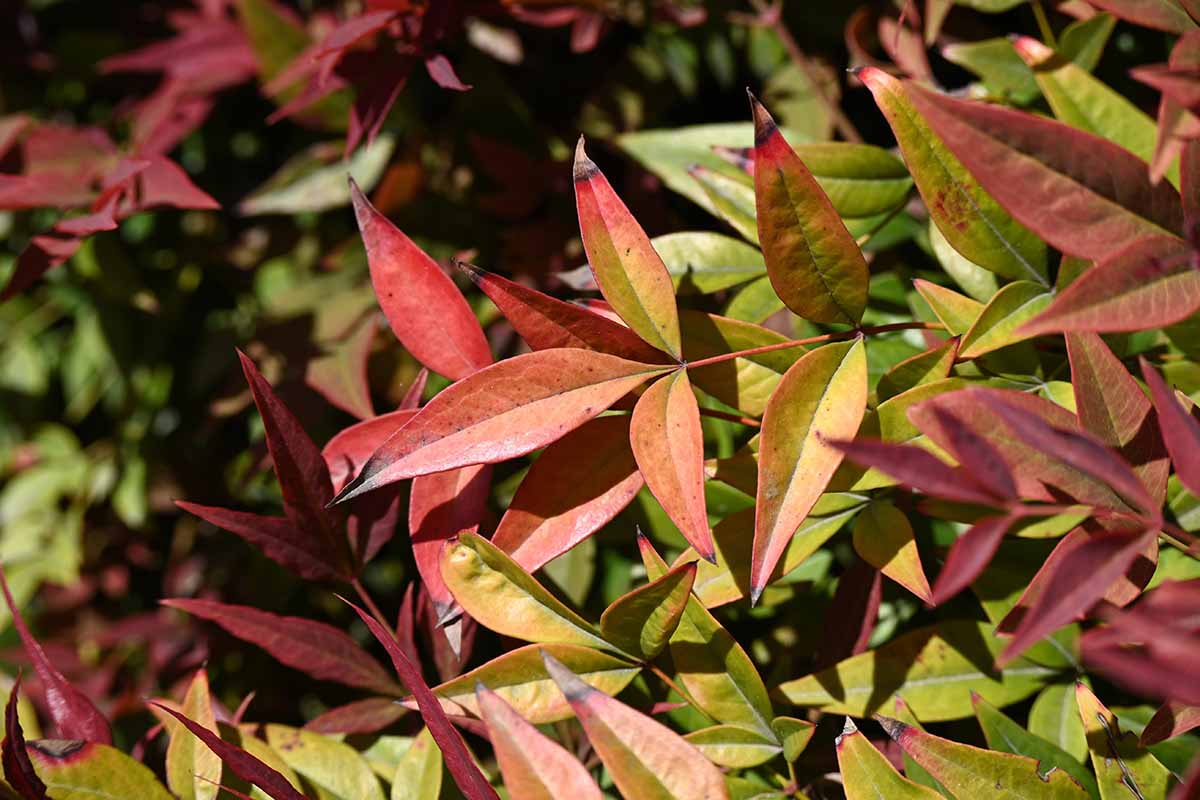
Injured or dying plant tissues can act as entry points for disease-causing pathogens, and can also signal to pests that the plant is especially vulnerable.
Even if every part of a plant is at peak health, that doesn’t guarantee its well-being.
When shoots are too densely-packed, inter-plant airflow is reduced, and moisture from rainfall or irrigation hangs around for longer than it should. And when that happens, water-loving pathogens are all the more inclined to visit.
Want to prevent potential infestations and infections? Then you should dial in your pruning!
Vigor
In a botanical balancing act, the aboveground shoots and belowground roots of a plant try to stay in approximate proportion with each other, as X amount of shoot needs the support of X amount of root in order to stay alive, and vice versa.

When you remove some shoots, there’s suddenly a greater amount of roots by comparison and these are out of proportion. This “extra” root mass provides an increase in resources to the remaining shoots, which results in speedier shoot growth and development.
Time this with the flush of springtime growth that already occurs naturally, and you’ve got rejuvenation levels that’ll make Marvel Comics’ Wolverine blush.
What You’ll Need
On board? Great! Here’s what you’ll require to get started:
Personal Protective Equipment
Even though heavenly bamboo pruning lacks the thorn-poking that, say, rose pruning does, there are still some potential risks, such as splinter-piercing and accidental finger amputation.
Alright, hopefully not that last one. Safety first, everybody! No need to go overboard with head-to-toe protection or anything, but a humble set of safety glasses and work gloves will further reduce the already minuscule odds of bodily harm.

Avoid eyeball evisceration in style with these scratch-resistant, anti-fog safety glasses from Amazon.
Puncture-Resistant Gardening Gloves
Puncture-resistant gardening gloves in blue or black are available from Garret Wade.
Hand Pruners
When it comes to trimming up a heavenly bamboo, a high-quality set of hand pruners will be your go-to tool, as they’re the perfect size for maneuvering through dense shrubbery with ease.
Be sure to keep the blades sharp for clean, aesthetic cuts!
Ultra Sharp Pruners with Rubber Grips
For a beautiful set of sky blue or rose gold hand pruners with a sap-resistant handle and a titanium nitride upper blade, head on over to Garrett Wade.
They even come with an optional leather sheath, for carrying convenience and/or honing your quick-draw skills.
The classic Felco F-2s are another gardening standby.
Loppers
Some heavenly bamboo canes will require something more than hand pruners.
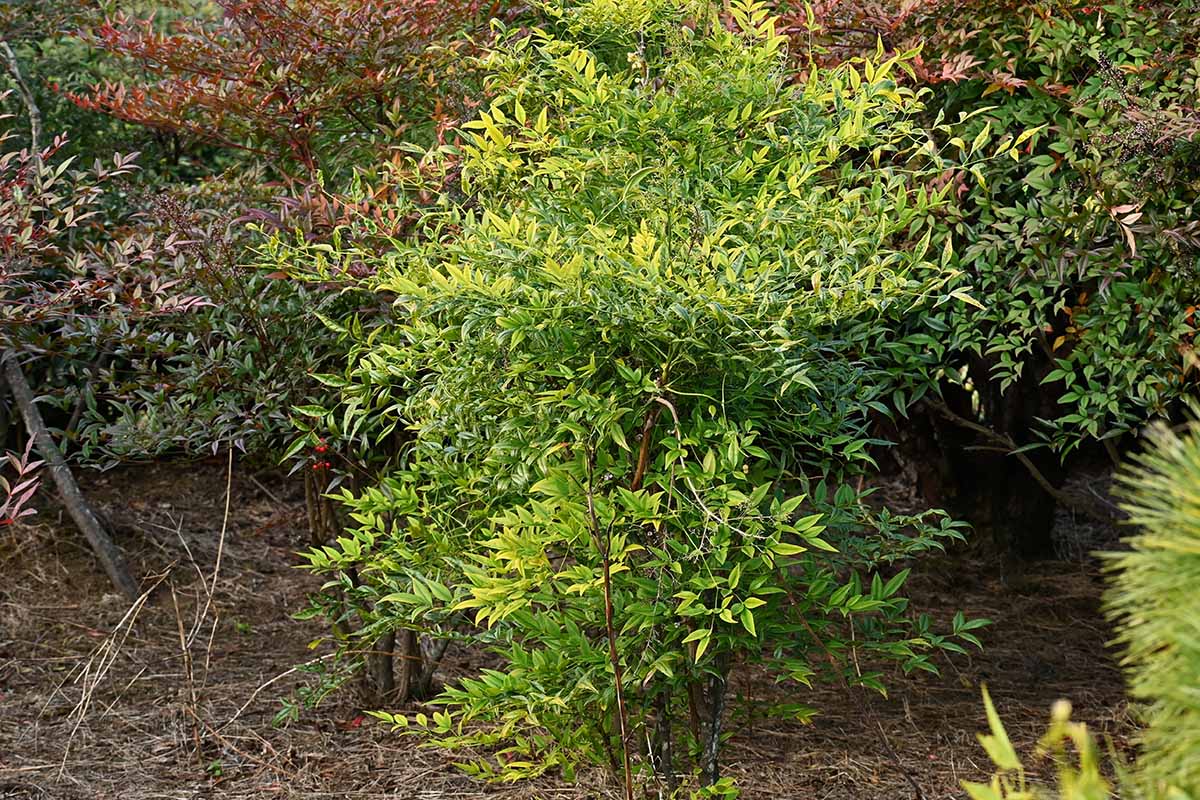
Even if the canes can fit within the blades, habitually forcing snips can leave you with messy cuts and dulled blades over time.
The oldest and thickest canes will probably warrant the use of long-handled, sturdy loppers, which cut thick stems with relative ease.
Grab a set of heavy-duty loppers with rubber handle grips via Garrett Wade.
Isopropyl Alcohol
Pathogens are resourceful, and can hitch a ride on many different things: bugs, water, or even the air.
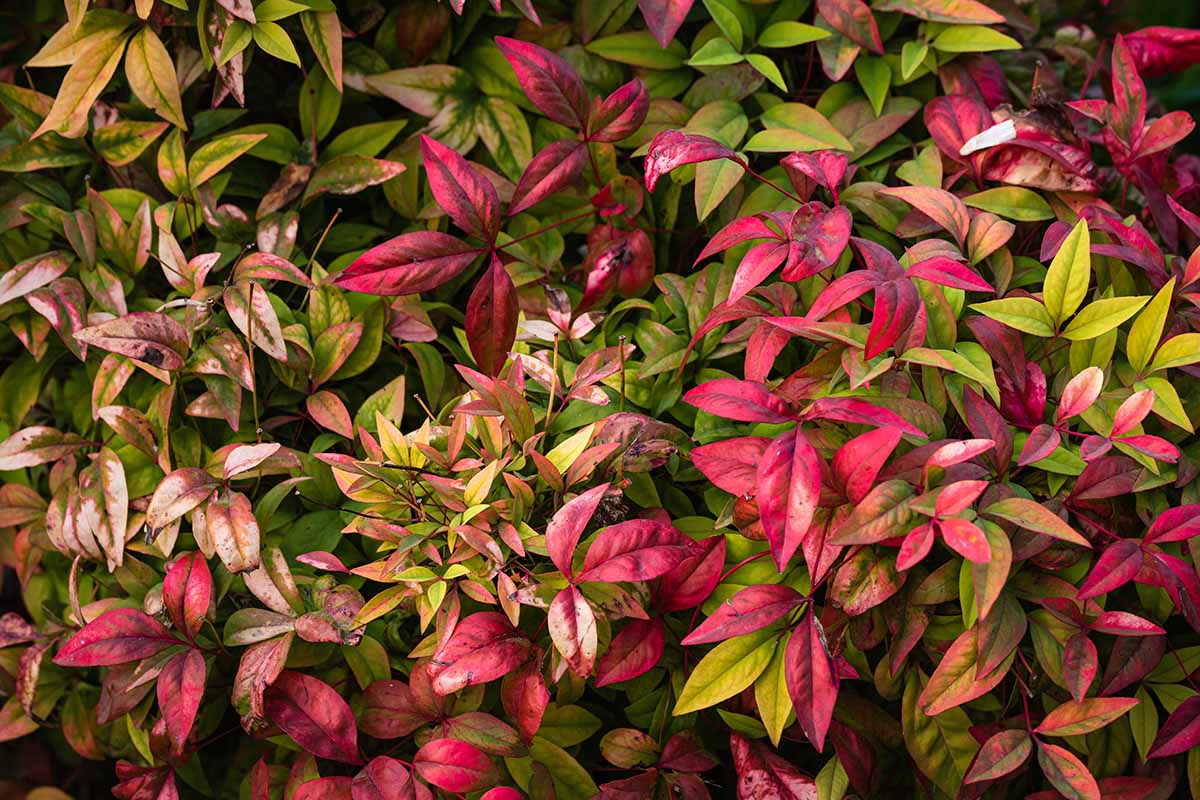
They can also travel via your cutting tools, which can spread them from plant to plant if said tools aren’t sterilized in between plantings.
A simple and inexpensive way to sterilize your blades is via a solution of isopropyl alcohol and water – a 7:3 ratio of alcohol to agua should do the trick.

For a bottle of 99 percent isopropyl alcohol, Amazon has you covered.
How to Prune Heavenly Bamboo
First things first: let’s cover what absolutely has to go.
Any heavenly bamboo tissues exhibiting signs of sickness, damage, or decay should be removed whenever you notice them, regardless of the season. These structures pose potential health risks, and need to go bye-bye ASAP.

Next, you have your annual pruning session, in which you should try and shape up your heavenly bamboo by removing no more than a third of the plant’s total aboveground mass.
You can time this session in the middle of winter, in early spring before the first flush of new growth, or any time in between.
During this bout of shaping, remove any bare, leaning, rubbing, or excessively tall canes that detract from the plant’s natural-looking form.
If the growth of your heavenly bamboo is looking rather thick and crowded, increase airflow within the plant by removing a few of the oldest and thickest canes.
When removing a cane, make the cut all the way down to the ground at the base of the stem.
I’m of the opinion that N. domestica looks its best with a natural-looking form, so it’s best to avoid leaving one with a shape that appears manicured! Pruning into a dense hedge can also impede airflow.
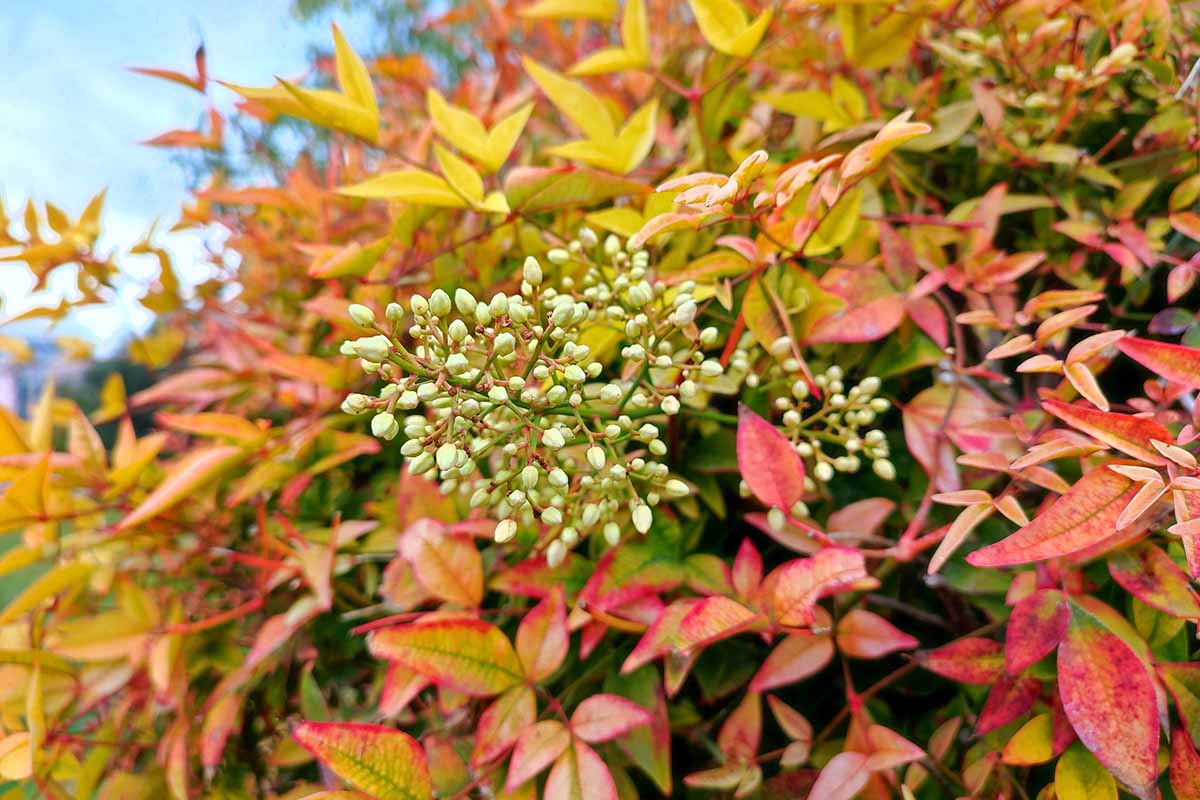
Another thing to remember about heavenly bamboo: the red berries contain cyanide. Eaten in large amounts, they may be toxic to birds and household pets such as cats and dogs.
Any concerned gardeners should remove the flowering branches as they bloom in spring to prevent the fruits from forming.
Any removed structures can be composted or tossed onto the brush pile… except for ones that exhibit signs of disease. Any plant material collected from sick plants should be thrown away to prevent spread of infectious pathogens.
If you find the leaves, branches, flowers, and berries you’ve removed are aesthetically pleasing, feel free to use them in floral arrangements! Arranging foliage from the garden is a lovely way to brighten up your interior decor.
A Little Slice of Heaven(ly Bamboo)
That’s all that pruning is, really: a small, strategically-placed slice. Rack up enough of them, and your heavenly bamboo’s appearance can drastically change for the better.
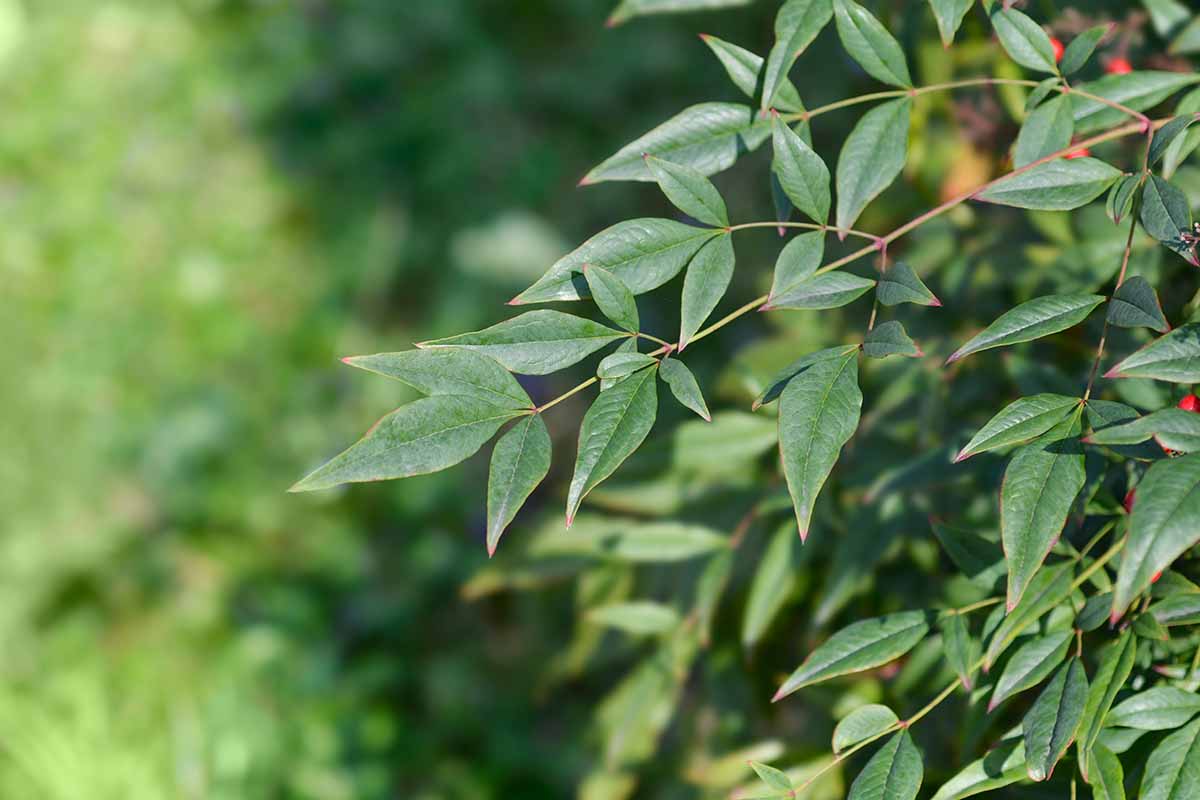
Don’t worry about making mistakes, as it’s all part of the learning process. Plus, that’s the great thing about plants – since they grow back eventually, most types are very forgiving and gracious of gardening mistakes!
Any techniques I left out of this guide? Questions? Put them in the comments section below.
Need more advice on shrub-shaping and maintenance? Don’t fret, we’ve got your back with these articles:

